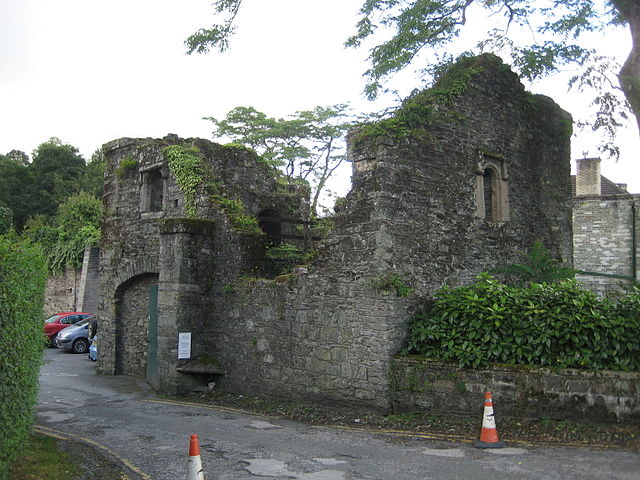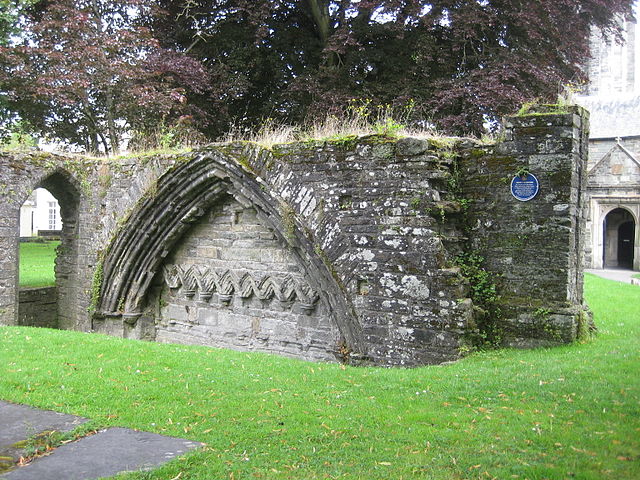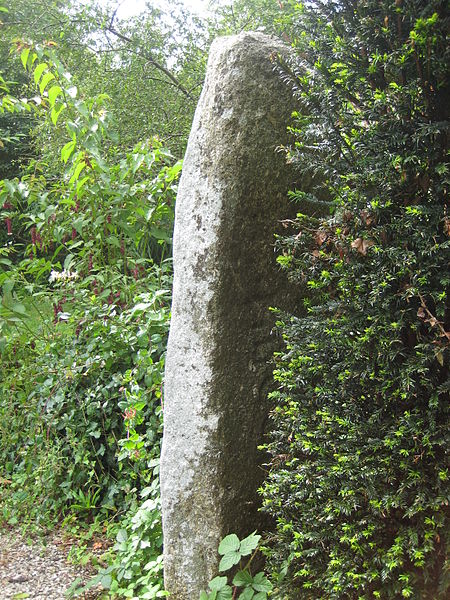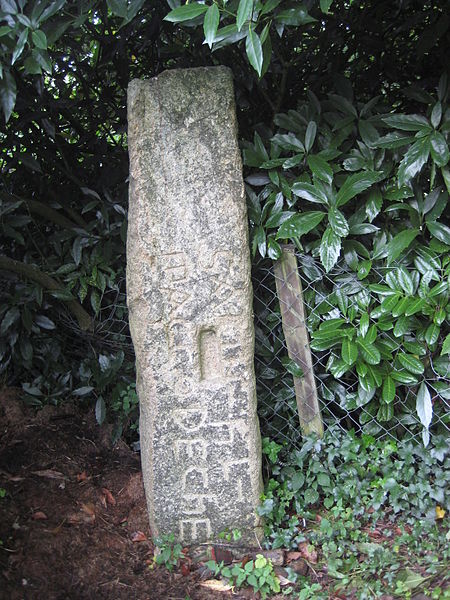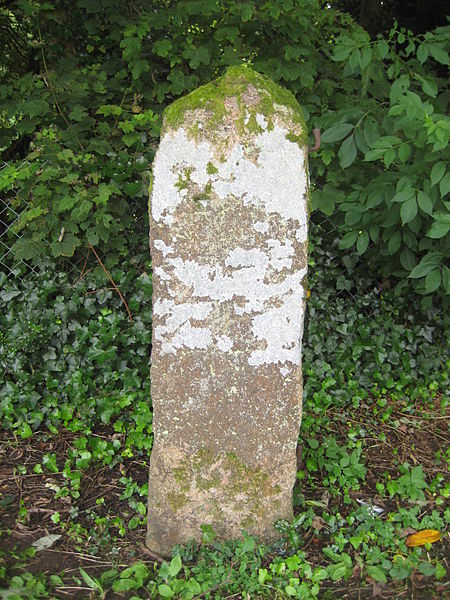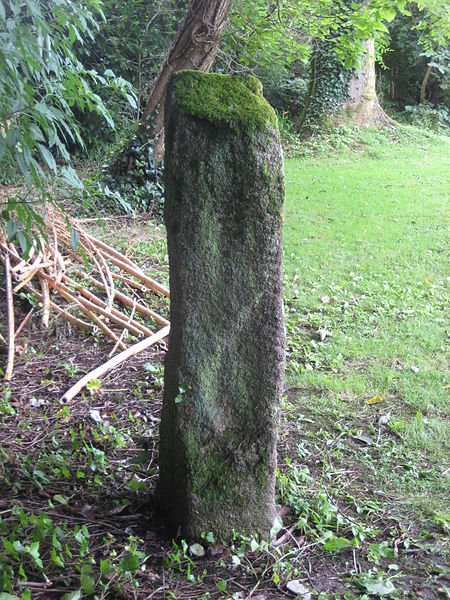Diary of a Rambling Antiquarian
Tuesday, 14 August 2012
Hunting Ogham Stones in Devon
Two years ago—it feels like just yesterday—my daughter and I were hunting for Ogham stones in Cornwall. We are back in Devon, visiting my mother, again, and this time I want to dedicate a day to find the only certain Ogham stone remaining in Devon. There were two known Ogham stones in Devon once, but the red sandstone pillar that was found by the Rev. Samuel Pearse at the Fardel Brook near the southern edge of Dartmoor in about 1860 is now in the British Museum in London.
Fardel Stone at the British Museum
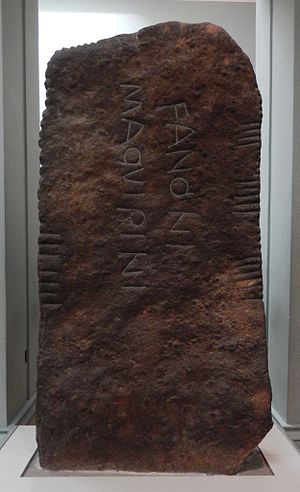 |
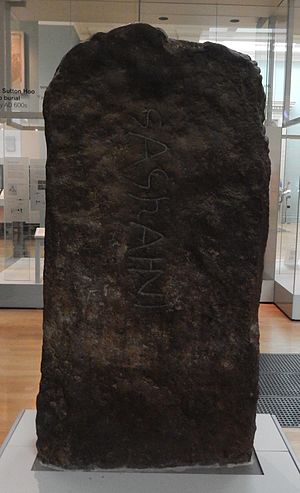 |
FANONI
MAQVIRINI
SAGRANVI
ᚄᚃᚐᚊᚊᚒᚉᚔ
ᚋᚐᚊᚔᚊᚔᚉᚔ
[details]
The other Devon Ogham stone was found by the Rev. E. A. Bray in 1834, when it was being used as a gatepost to a field on Roborough Down, near the eastern edge of Dartmoor (about 20 km northwest of the Fardel stone). The landowner refused Bray's request to remove it to his garden at Tavistock vicarage (about 5 km north of the Roborough Down), but in 1868 the 9th Duke of Bedford decided otherwise, and the stone was replanted to Tavistock Vicarage Garden, where it joined two other Celtic inscribed stones from nearby that had been moved to the garden by Bray during the first half of the 19th century.
Vicarage Garden, Tavistock
The Vicarage Garden is not open to the public, but I contacted the vicar, Michael Brierley, a week before we arrived in Devon and he very kindly agreed to arrange for someone to let us into the garden today at 10.00, so rain or shine today is the day. The morning starts off a little cold and rainy, but by the time we reach Tavistock a little after 9.00 the sun is peeking in and out of the clouds, and it is promising to be a relatively fine day.
The vicarage is situated next to the remains of the Great Gate of Tavistock Abbey, known as "Betsy Grimbal's Tower" (a corruption of Blessed Grimwald). The abbey was dedicated in 1318, dissolved in 1539, and demolished by 1700. In addition to Betsy Grimbal's Tower, a single surviving arch of the abbey cloisters still stands in the churchyard, a stone's throw from the vicarage. On the other side of Betsy Grimbal's Tower, opposite the ruins of the cloisters, is the magnificent Bedford Hotel, originally the occasional residence of the aforementioned Duke of Bedford.
Betsy Grimbal's Tower
Arch of the Cloisters of Tavistock Abbey
We are met by the parish administrator, a very friendly and helpful lady, who shows us through the church hall and out a back door into the large, lawned garden at the back of the vicarage. The first stone we look at is situated close to the vicarage, and has a clear Latin inscription on one side. Unfortunately someone thought it would be a good idea to grow a yew hedge right in front of the inscribed face, making the inscription hard to photograph. This stone was originally found in the pavement at West Street, Tavistock, and then used as a bridge over a stream, before Bray moved it to the grounds of Abbey House in 1804. It was finally erected in its current location in about 1818.
Inscribed stone at Tavistock Vicarage Garden
NEPRANI
FILI
CONBEVI
The next stone to be examined is situated in the opposite corner of the garden, behind some bushes. This stone was originally located near the churchyard in Buckland Monachorum, and was moved to the vicarage garden by Bray in 1831. The Latin inscription is boldly carved and extraordinarily well-preserved, despite a large hole that must have been made when it was used as a gate post. From my point of view, the most striking feature is the sideways letter I used at the end of each word (the last instance now buried under the ground), which is an epigraphic feature unique to early medieval (5th to 6th centuries) Celtic inscriptions from Wales and southwest England.
Inscribed stone at Tavistock Vicarage Garden
SABINI FILI
MACCODECHETI
Finally, we come to the one stone which has an Ogham inscription on it, which we have deliberately saved until last, even though it is the first stone you notice as you enter the garden, placed in the back of the garden in a central position. The Latin inscription on the front face of the stone is supposed to read DOBVNNI FABRI FILII ENABARRI ("Of Dobunnus the smith, son of Enabarrus") in three lines running downwards, but it is now extremely weathered, and at first sight there appears to be no inscription at all on the front of the stone. However, with a little imagination and prior knowledge of what is supposed to be inscribed there, most of the letters can just about be recognised, although I would have found it impossible to make a reading unaided. The Ogham inscription on the left edge, reading upwards, is in much better condition, and the last five letters of "ENABARR" can still be recognised quite easily (the letters "ABA" are particularly distinct on close examination). The 19th century iron gate hooks are still attached to the right edge of the stone—it was lucky they were not fixed on the left side, over the Ogham inscription.
Front view of the Roborough Down Ogham Stone
DOBVNNI
FABRI FILII
ENABARRI
Side view of the Roborough Down Ogham Stone
ᚓᚅᚐᚁᚐᚏᚏ
[details]
Satisfied, we take our leave.
Appendix 1: Me with the Tavistock Stones
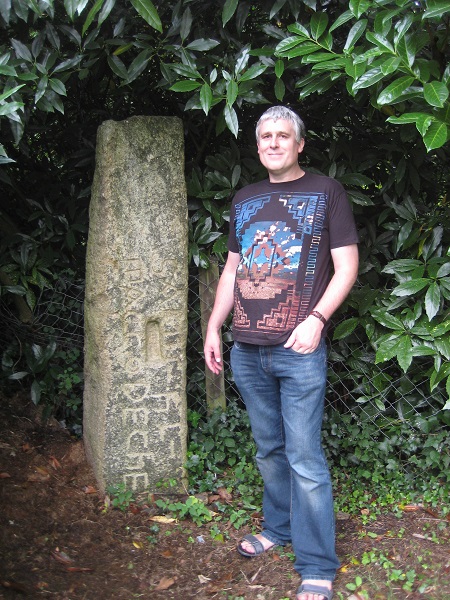
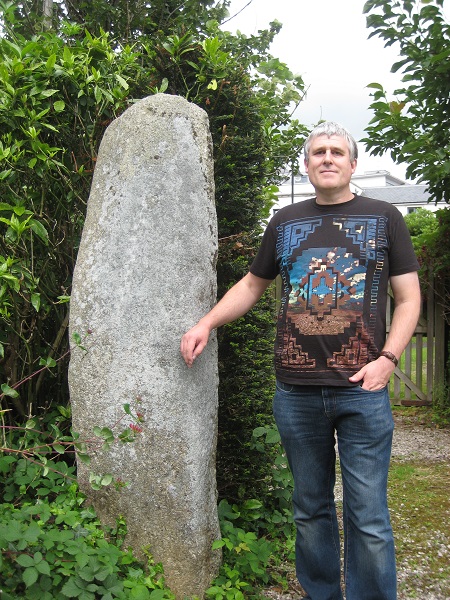
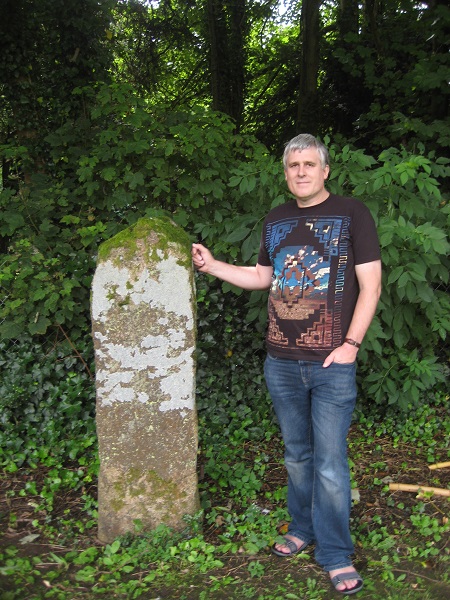
Appendix 2: Me with the Fardel Stone at the British Museum in August 2018
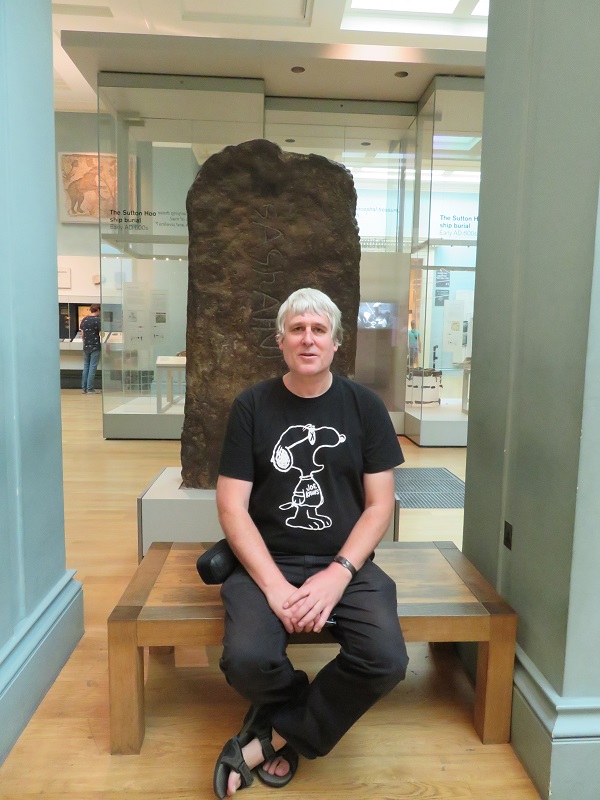
Index of Rambling Antiquarian Blog Posts
Rambling Antiquarian on Google Maps
